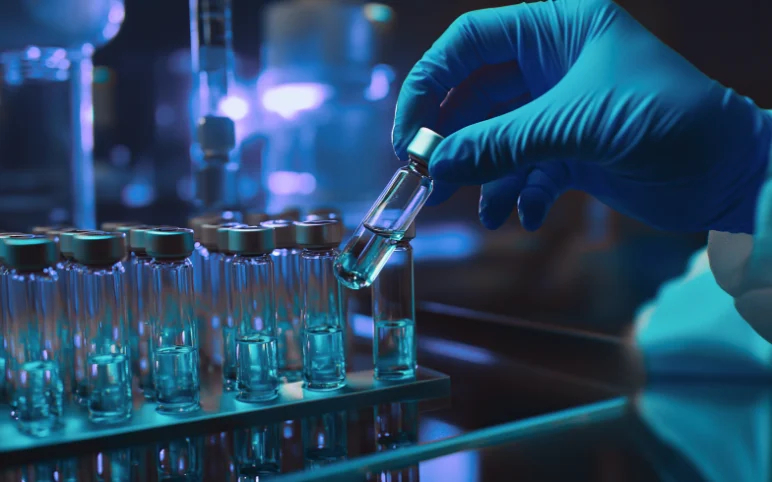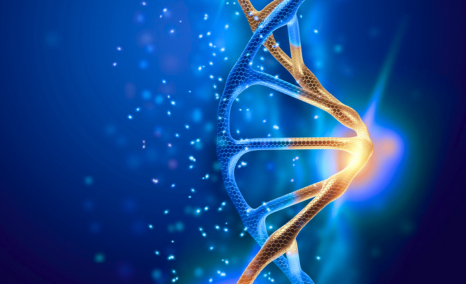Will The Emerging Pipeline Address The Congenital Adrenal Hyperplasia Treatment Puzzle?
Aug 15, 2022
Table of Contents
Congenital adrenal hyperplasia (CAH) is a rare inherited autosomal recessive disorder defined by a lack of one of the enzymes required to produce specific hormones. In the United States and Europe, the most prevalent type of CAH, 21 hydroxylase deficiency, affects around 1:10,000 to 1:15,000 people. The estimated CAH prevalence is 1 in 10,000, and the yearly incidence ranges from 1 in 5000 to 1 in 15,000.
As per DelveInsight analysis, the total 7MM diagnosed prevalent cases of CAH in 2021 were more than 73K, out of which the maximum cases were seen in the US. The EU5 countries accounted for approximately 30K cases in 2021. Moreover, the United States has the highest number of age-specific CAH cases, among which the highest observed in the ≥18 years age group in 2021, per our analysis. Furthermore, as per Delveinsight’s estimates, the age-specific cases of CAH are expected to increase by 2032.
Downloads
Click Here To Get the Article in PDF
Recent Articles
- FDA Approves Neurocrine’s CRENESSITY for Congenital Adrenal Hyperplasia; Checkpoint’s UNLOXCYT Ap...
- Madrigal Wins EU Approval for REZDIFFRA in MASH With Liver Fibrosis; Valneva Faces FDA License Su...
- Congenital Adrenal Hyperplasia Treatment in Transition: Innovations, Setbacks, and Strategic Shif...
Congenital Adrenal Hyperplasia Treatment
There is currently no cure for CAH. However, congenital adrenal hyperplasia treatment for some of the accompanying symptoms is available. Patients benefit from hormone replacement therapy, which works to improve levels of inadequate hormones while suppressing male hormone overproduction. Most patients with typical CAH will require hormone therapy for the remainder of their lives. Adults with less severe CAH can occasionally quit taking these drugs and are usually treated with lesser dosages. Some people with non-classic CAH do not require congenital adrenal hyperplasia treatment. However, the current congenital adrenal hyperplasia treatment includes
Glucocorticoid Replacement Therapy: Glucocorticoid replacement therapy aims to restore insufficient steroids, reduce adrenal sex hormone and glucocorticoid excess, avoid virilization, optimize development, and enhance fertility. In growing youngsters, hydrocortisone in tablet form is the preferred congenital adrenal hyperplasia treatment. Oral hydrocortisone suspension is not recommended. CAH is primarily treated with glucocorticoid replacement therapy, often in the form of hydrocortisone (10-15 mg/m2/24 h) administered orally in two or three daily split doses.
Mineralocorticoid Replacement Therapy: Individuals with the salt-wasting variant of 21-OHD CAH require congenital adrenal hyperplasia treatment with 9-fludrohydrocortisone (Florinef) (0.05-0.2 mg/day orally) and sodium chloride (1-2 g/day added to formula or foods). In the infant and early infancy, all people with the classic type should be treated with both 9-fludrohydrocortisone and salt chloride supplementation.
Feminizing Genitoplasty: Surgery should only be considered in situations of severe virilization (Prader III-V) and should be undertaken in combination with the repair of the common urogenital sinus when suitable. Because clitoral surgery may disrupt orgasmic function and erectile sensation, the surgical method should be anatomically based in order to preserve erectile function and clitoris innervation. The emphasis is on the functional output rather than the aesthetic.
Testicular Adrenal Rest Tumors: The response of testicular adrenal rest tumors to increased glucocorticoid therapy may reduce tumor growth and enhance testicular function. In males who have failed medicinal congenital adrenal hyperplasia treatment, testis-sparing surgery is explored, although the prognosis is not satisfactory, possibly due to prolonged tubule blockage. To achieve fertility, assisted reproductive technologies (ART) may be considered.
Adrenalectomy: Individuals with severe 21-OHD CAH who are homozygous for a null variation and have a history of poor management with hormone replacement therapy have been treated with bilateral adrenalectomy. These patients are regarded to be more effectively treated than those with Addison disease; nonetheless, postoperative adherence to the drug regimen is critical. As a result, bilateral adrenalectomy should be considered only in those who have failed medicinal congenital adrenal hyperplasia treatment.
However, to improve the congenital adrenal hyperplasia treatment landscape, several pharmaceutical companies such as Neurocrine Biosciences, Diurnal Limited, Spruce Biosciences, Adrenas Therapeutics, Millendo Therapeutics, and others are evaluating their lead assets in various stages of development. The launch of these congenital adrenal hyperplasia therapies will boost the market growth.

The Future Congenital Adrenal Hyperplasia Treatment Market Looks Promising
Aside from all of these congenital adrenal hyperplasia treatment options; the market has a number of unmet needs, such as a lack of therapy, innovative treatment, and recommendations for adolescents and adults with 21-hydroxylase insufficiency. Various research studies have focused on creating CAH therapies in order to address the market's existing unmet requirements and give improved congenital adrenal hyperplasia treatment alternatives. However, the dynamics of the congenital adrenal hyperplasia treatment market are anticipated to change in the coming years owing to the improvement in the research and development undertaking.
As per DelveInsight analysis, the total congenital adrenal hyperplasia market size was approximately USD 21 million in the 7MM in 2021.
Moreover, several congenital adrenal hyperplasia companies are developing novel therapies. The congenital adrenal hyperplasia pipeline looks promising with some novel therapies, including Crinecerfont (Neurocrine Biosciences), SPR001 (Spruce Biosciences), Chronocort (Diurnal Limited), AAV BBP-631 (Adrenas Therapeutics), and others.
Crinecerfont (Neurocrine Biosciences) is an orally active, powerful, selective CRF1 receptor antagonist. CRF1 is a hypothalamic hormone produced directly into the hypophyseal portal vasculature that stimulates the production of adrenocorticotropin hormone (ACTH) via the CRF1 receptor, a G protein-coupled receptor (GPCR) in the anterior pituitary. ACTH's main function is to stimulate the production and release of adrenal hormones such as cortisol. Cortisol from the adrenals has a negative feedback effect at the hypothalamic level, inhibiting CRF1 release, as well as at the pituitary level, inhibiting ACTH release.
Crinecerfont is currently being studied in Phase III congenital adrenal hyperplasia clinical trials to determine its safety and effectiveness in adult and pediatric patients with classic CAH. It has been designated as an orphan drug in the United States and the European Union for classic congenital adrenal hyperplasia treatment.
Chronocort (Diurnal Limited) is a hydrocortisone modified-release formulation used to treat congenital adrenal insufficiency and adrenal insufficiency for life. It is specifically designed to mimic physiological cortisol replacement as closely as possible throughout the day. Chronocort is a cortisol replacement product that was especially intended to imitate the circadian cycle of cortisol when administered twice daily (last thing at night and first thing in the morning) to reduce androgen excess and chronic tiredness in patients with cortisol deficient disease. The drug is currently in the Phase III stage of development for congenital adrenal hyperplasia treatment.
Tildacerfont (Spruce Biosciences) is a CRF1 receptor antagonist that may give significantly better disease management and reduced steroid burden in people with typical CAH and other disorders defined by increased adrenocorticotropic hormone levels (ACTH). It binds to CRF1 receptors on the pituitary gland, preventing excessive ACTH synthesis and, as a result, decreasing the formation of adrenal androgens such as androstenedione, a precursor to testosterone. Tildacerfont has been studied in eight congenital adrenal hyperplasia clinical trials, including a total of 235 individuals and two Phase II trials in patients with typical CAH. Both the US FDA and the EMA have granted it an orphan drug designation for classic congenital adrenal hyperplasia treatment.
AAV BBP-631 is an AAV5 gene therapy developed by Adrenas Therapeutics, a BridgeBio subsidiary, to treat CAH caused by a lack of 21-hydroxylase. BBP-631 is intended to give a functioning copy of the 21-hydroxylase gene and has been proven in many preclinical experiments to result in effective and sustained transport to the adrenal gland, where hormones are naturally produced. If effective, BBP-631 may restore the body's hormone and steroid balance by allowing persons with CAH to produce cortisol and aldosterone naturally. It may also enable persons with CAH to reduce or remove their daily glucocorticoid or mineralocorticoid dosages, which are currently the mainstay of congenital adrenal hyperplasia therapy for patients.
The Phase I/II clinical study has begun with the first patient, and the findings are expected in the second half of 2022. The FDA granted the company fast-track designation in May 2021. Furthermore, BBP-631 has received Rare Pediatric Disease Designation by the FDA and as an Orphan Drug by the FDA and the European Medicines Agency (EMA).
What Lies Ahead?
There are several unmet needs to cater to the needs of the patients. Non-classical CAH may not be diagnosed until later in life. In addition, CAH can be confused with other conditions such as Addison's disease, Ovotesticular dysfunction, and Turner syndrome. Moreover, gene therapy is expensive; also, the healthcare system in most countries, including the United States, is not designed to accept significant one-time expenditures. Gene treatments require more time to get approved than small molecules. Furthermore, unlike small molecules or monoclonal antibodies, approval standards for gene treatments are not clearly established.
However, a unique prolonged congenital adrenal hyperplasia treatment method can address the long-term adverse effects, comorbidities, and circadian rhythm insufficiency caused by glucocorticoids and mineralocorticoids. The current congenital adrenal hyperplasia treatment focuses mostly on individuals with 21-hydroxylase insufficiency; however, prospective research on atypical CAH variants is expected to open the door for rare type therapies. Additionally, in developed countries across the world, prenatal and neonatal screening for CAH disease has been introduced, allowing for the early identification and congenital adrenal hyperplasia treatment in children. Moreover, current research and clinical studies for innovative therapeutic molecules such as selective corticotropin-releasing factor type 1-receptor inhibitors, gene therapy, and ACAT-1 inhibitors are showing promising results and will change the scenario of congenital adrenal hyperplasia treatment in the coming years.
FAQs
Congenital adrenal hyperplasia (CAH) is a rare inherited autosomal recessive disorder defined by a lack of one of the enzymes required for the production of specific hormones.
Congenital adrenal hyperplasia symptoms and signs differ depending on which gene is affected and the extent of enzyme deficiency. Too little cortisol, too little aldosterone, excess androgens, or a combination of these abnormalities may indicate a hormonal imbalance.
The lack of the enzyme 21-hydroxylase is the most prevalent congenital adrenal hyperplasia causes. CAH caused by 21-hydroxylase deficiency accounts for 95% of all instances of CAH and subtypes in both classical and non-classical CAH.
There is currently no cure for CAH. However, congenital adrenal hyperplasia treatment for some of the accompanying symptoms is available. Patients benefit from hormone replacement therapy, which works to improve levels of inadequate hormones while suppressing male hormone overproduction.
Several pharmaceutical companies such as Neurocrine Biosciences, Diurnal Limited, Spruce Biosciences, Adrenas Therapeutics, Millendo Therapeutics, and others are evaluating their lead assets for congenital adrenal hyperplasia treatment in various stages of development.
The congenital adrenal hyperplasia pipeline looks promising with some novel therapies, including Crinecerfont (Neurocrine Biosciences), SPR001 (Spruce Biosciences), Chronocort (Diurnal Limited), AAV BBP-631 (Adrenas Therapeutics), and others.
Downloads
Article in PDF
Recent Articles
- Congenital Adrenal Hyperplasia Treatment in Transition: Innovations, Setbacks, and Strategic Shif...
- Madrigal Wins EU Approval for REZDIFFRA in MASH With Liver Fibrosis; Valneva Faces FDA License Su...
- FDA Approves Neurocrine’s CRENESSITY for Congenital Adrenal Hyperplasia; Checkpoint’s UNLOXCYT Ap...



